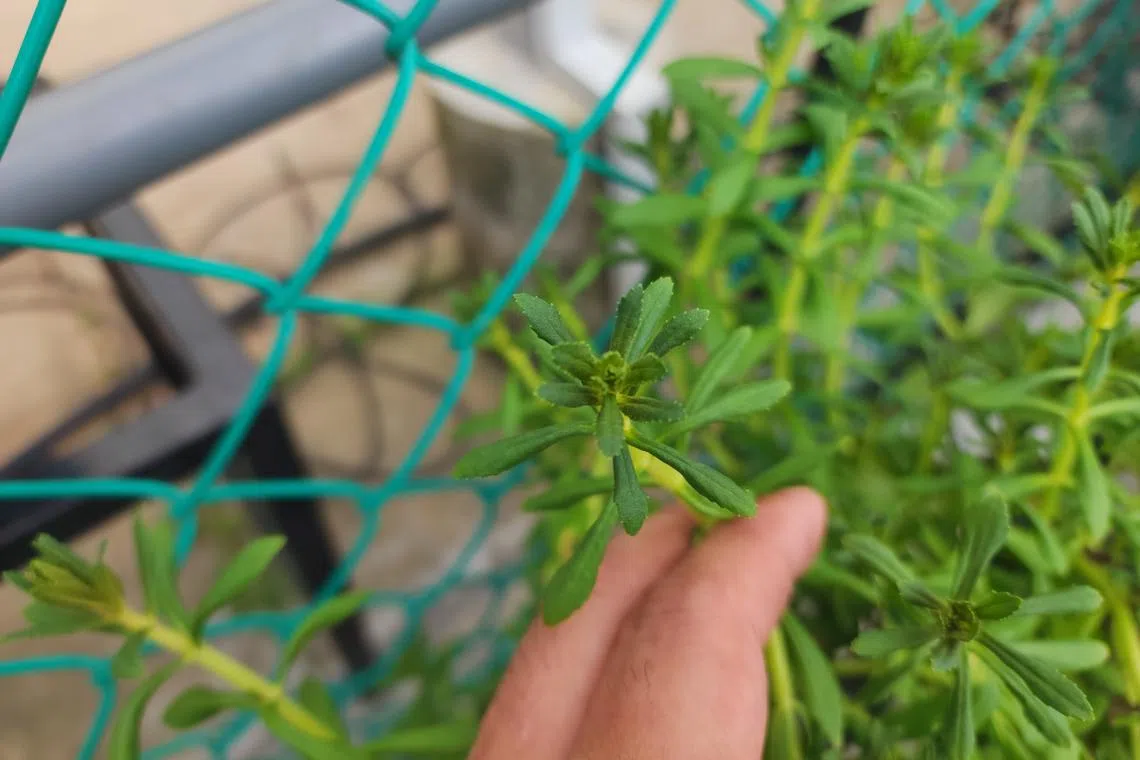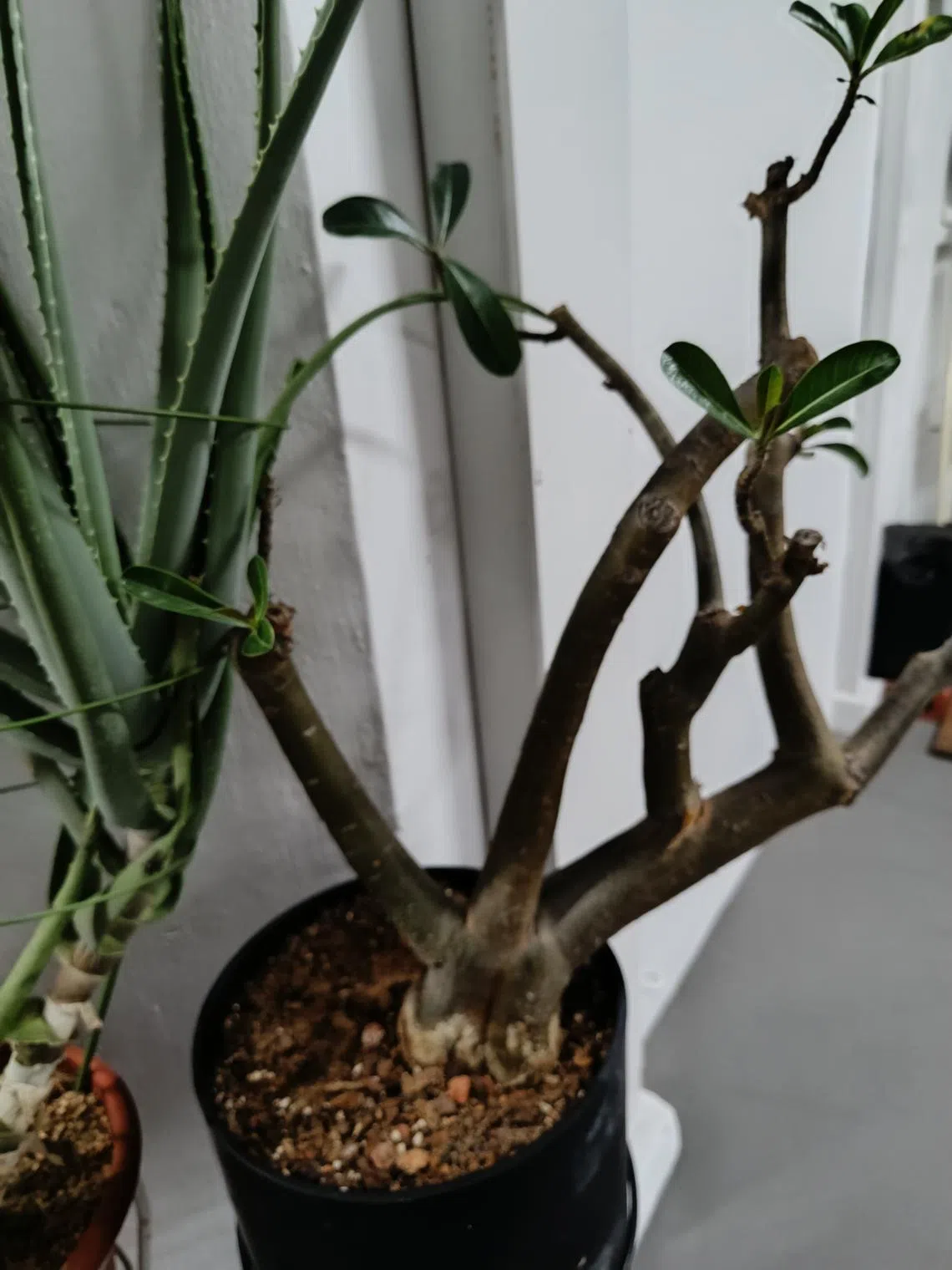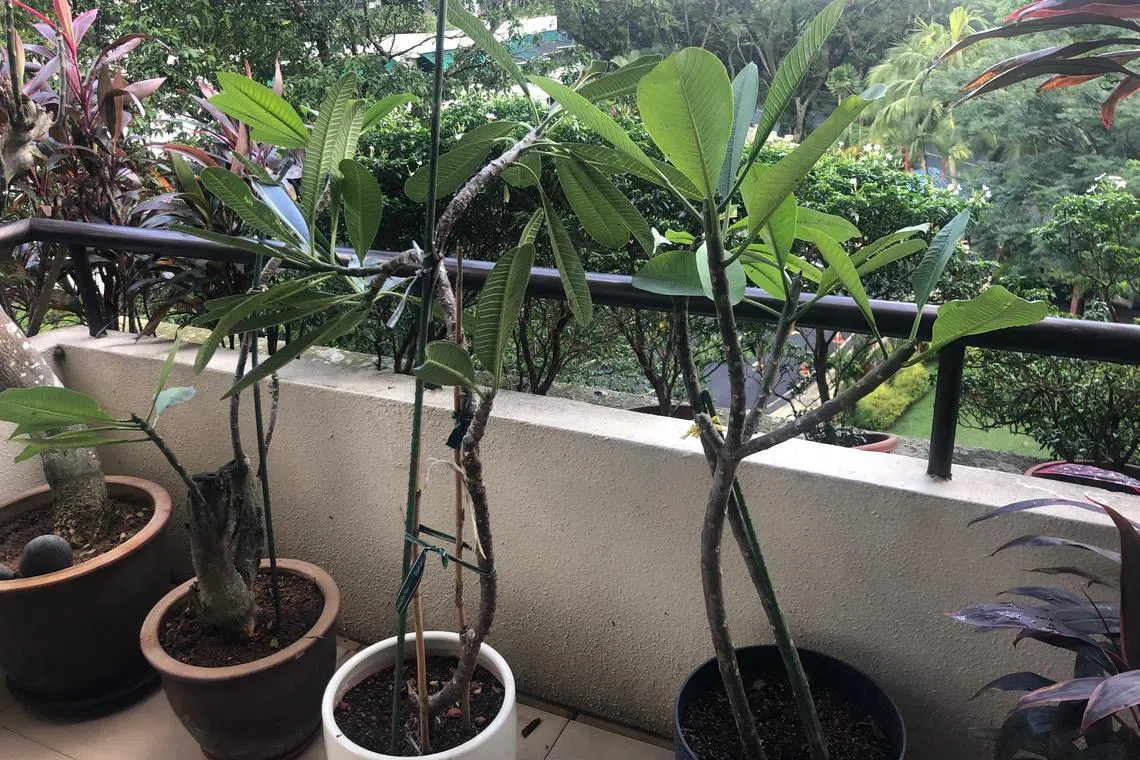Root Awakening: Rice Paddy Herb may have mite infestation
Sign up now: Get ST's newsletters delivered to your inbox

The misshapen leaves of this herb may be a result of mite damage.
PHOTO: ADRIAN LING
Wilson Wong
Follow topic:
Infestation not result of thrips
The leaves on my Rice Paddy Herb have been affected by thrips. What are the treatment and prevention options? Also, is the flower edible?
Adrian Ling
The damage to the new leaves of your Rice Paddy Herb (Limnophila aromatica) does not appear to have been caused by thrips. Thrips feed by rasping, which leaves irregular white markings on the surface of leaves.
The misshapen leaves may be due to broad mites instead. These are microscopic pests that are not visible to the naked eye. Try using lime sulphur or abamectin on your plants, focusing on the new growth in particular.
The flowering portion of the plant should be safe to consume, since the aerial parts of the plant are widely used as a vegetable, although the use of its flowers is rarely mentioned.
Desert Rose needs light

Move the Desert Rose to a sunny spot so it can recover.
PHOTO: CINDY CHIA
My plant has very few leaves and cracked branches, and is not flowering. Should I discard it?
Cindy Chia
Your Desert Rose (Adenium obesum) seems to be suffering from a lack of sunlight. This plant needs to be grown in a spot that gets direct sunlight for at least six hours a day. Move it to a sunny corridor or balcony to allow it to recuperate.
A lack of direct sunlight will lead to long, lanky and soft stems, and the plant will not flower. Its vigour and health will decline, and the plant will gradually succumb to pests and diseases.
Object is a secondary fruit

This object is a secondary ovary, or a "fruit" within a fruit.
PHOTO: HO SWEET FAR
When I cut open my ripe papaya, I found this banana-shaped object, measuring about 7cm by 3cm, in the centre. Is it a seedling? Can it be eaten or planted?
Ho Sweet Far
The object within your papaya fruit is called a secondary ovary, or a “fruit” within a fruit. It is a physiological disorder that occurs in hermaphrodite papaya varieties. It is reportedly insipid in flavour and may not contain seeds. If there are seeds, they are typically not viable.
Check quality of soil used to grow frangipani

Frangipani plants need better-draining growing media to thrive.
PHOTO: ANAND DANANI
The frangipani plants on my balcony get plenty of sun, water and fertiliser, but they have not flowered for over six months. What is wrong with the plants and is this a common issue?
Anand Danani
Your frangipani plants’ large leaves and long floppy branches indicate that they lack the sunlight needed for growth. Ensure that they get at least six hours a day of direct sunlight all year round.
Most apartments and flats experience half-yearly periods of full sun and shade, as the sun changes its path across the sky over the course of the year. As such, frangipanis may not be the best plants to grow in high-rise settings.
Also, the base of one plant’s stem seems to have rotted, with the bark peeling off. Ensure that the containers you are using to grow your plants have drainage holes at the base.
From the picture, it looks like the soil you used is fine and clay-like. As such, it tends to drain poorly, hold too much moisture and compact down with time. The soil remains wet for prolonged periods, which can cause the plant to rot.
Use a growing mix that drains easily and dries out between each watering. Note that soil kept in shade will also have a lower evaporation rate.
Do not grow the plants too deeply – their trunks or stems may rot if they are grown too deeply.
Water lilies are drying out

These plants are not only drying out, but also suffering from a mite infestation.
PHOTO: LIM CHING YONG
My water lilies have brown insects and what looks like spiderwebs on the leaves. These keep coming back even after I wash the leaves. What are they? I keep fish in the pot for mosquito control. How can I get rid of the pests without harming the fish?
Lim Ching Yong
It looks like your water lilies’ leaves are growing out of the pot and therefore dry out easily. High-rise environments are low in humidity and lack beneficial biodiversity to help with pest control. Hot weather will stress plants out and lead to lower resistance to pest attacks.
In this case, your plants have been infested with spider mites, which are common in high-rise gardens. You may want to use a larger container to ensure that the leaves of your plants are in contact with water and do not dry out.
Unfortunately, pesticides – such as abamectin – commonly used to control spider mites are also toxic to aquatic life. Depending on how you grow your plants, you will need to remove the fish before applying pesticide.
After spraying the pesticide on the leaves, give the chemical some time to kill the pests. Wash the plant several times to remove residual pesticide before reintroducing the fish. Repeat the process on a regular basis until adequate pest control has been achieved.
Answers by Dr Wilson Wong, an NParks-certified practising horticulturist and parks manager. He is the founder of Green Culture Singapore and an adjunct assistant professor (Food Science & Technology) at the National University of Singapore.
Have a gardening query? E-mail it with clear, high-resolution pictures of at least 1MB, if any, and your full name to . We reserve the right to edit and reject questions.

